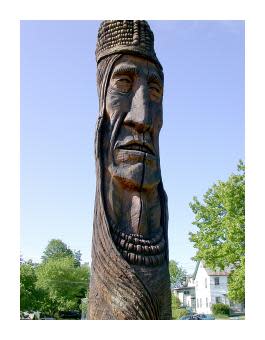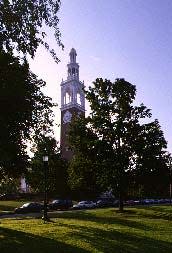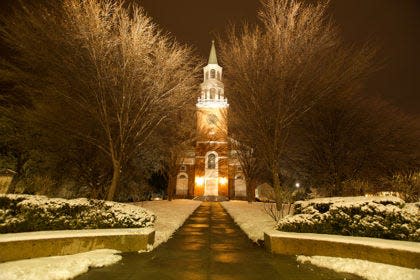Burlington is home to many historic sites. Here are the stories behind a few of them
This summer, be on the lookout for the hidden histories around Burlington. Some of the most iconic Burlington landmarks have a deep history hidden in them.
Here are some of the histories around town — and look for green historical markers around Burlington that point out battles, famous Burlington figures, and much more.
Battery Park
Battery Park is a beautiful staple of Burlington parks, known for its sweeping views of Lake Champlain and a base for the annual Burlington City Marathon. However, the park has also played a role in two American wars. If you look closely around the park, you’ll find green historical placards commemorating its connection to the War of 1812 and the American Civil War.
The site of what is now Battery Park saw a British attack in 1813, where American forces, led by Lieutenant Churchill (a Vermonter) constructed a battery to defend themselves against the British. According to the Burlington Parks, Recreation & Waterfront Department, the battery protected the American troops from British cannon fire.

Although the park was not officially deeded to the city of Burlington until 1870, the park holds a commemorative marker and a statue of Civil War General William Wells. The marker signifies the first Vermont soldiers to leave to fight in the Civil War in 1861.
The Park also holds a statue of Indigenous Chief Warrior Grey Lock, constructed by artist Peter Toth in 1982 to commemorate the legacy and land of the Abenaki people in Vermont.
Ethan Allen Homestead
Ethan Allen is a name not uncommon in Vermont. The leader of the Green Mountain Boys in the Revolutionary War has inspired countless streets, companies, and places around the state. In Burlington, you can visit the Ethan Allen Homestead, located off the beaten path off of Vermont 127.
The homestead was built by the famed Revolutionary War figure and was where he died after his life as a patriot in the war. The homestead, which previously stood as quiet private property until its rediscovery in 1974, is open daily as a museum and educational center from 10 a.m. - 4 p.m.
University of Vermont Green and the Allens
The University of Vermont is not only one of the oldest parts of Burlington, but is as old as the state of Vermont itself. The university and the state both came to be in 1791, and many of the buildings on the campus reflect its rich history.
Ira Allen, who is considered to be the founder of the university and the brother of Ethan Allen, also shares his name with the Ira Allen Chapel, which was constructed in 1925 and has a spot on the National Register of Historic Places.

The Unitarian Universalist Church
You may know this church as the namesake of Church Street. The history of this iconic Burlington building long pre-dates the busy pedestrian street. The First Society for Social and Public Worship was formed in 1797 in Burlington, which became known as the First Unitarian Universalist Society of today.
The society, which was founded only 6 years after Vermont joined the Union, constructed the church at what is now the head of Church Street in 1816. According to the cociety's website , this construction only cost around $22,000.

Keep an eye out for green placards around Burlington and the state for more hidden history in the communities.
Kate O'Farrell is a reporter for the Burlington Free Press. You can reach her at KOFarrell@freepressmedia.com
This article originally appeared on Burlington Free Press: Burlington, VT is home to many historic sites

